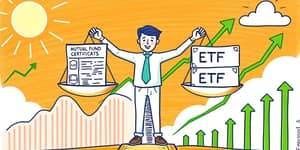
Harnessing the power of compounding through consistent reinvestment can transform modest savings into substantial wealth over time. Understanding and applying this principle will shape your financial future in dramatic ways.
Compounding is the remarkable process where your returns generate further returns, creating an accelerating growth cycle. Unlike simple interest—where earnings apply only to the principal—compounding applies to both principal and accumulated interest, fueling exponential expansion.
Albert Einstein famously hailed compound interest as “the eighth wonder of the world.” This metaphor underlines how small, steady reinvestments can yield transformative results over decades.
When you reinvest dividends, interest, or other earnings instead of withdrawing them, you enlarge your investment base. That larger principal drives greater future earnings, accelerating the wealth-building process.
Various asset classes compound differently through interest, dividends, or growth. Selecting the right mix depends on your risk tolerance, timeline, and income needs.
Concrete examples clarify how reinvestment magnifies wealth over time.
These figures illustrate how reinvestment creates a feedback loop: more assets generate more earnings, which in turn buy more assets.
Dividends are distributions of corporate profits paid to shareholders. Enrolling in a DRIP automatically converts these payments into fractional shares, often without commission fees.
With each dividend reinvested, your share count increases—magnifying returns over time. Continuous compounding via DRIPs is one of the simplest ways to turbocharge equity investments.
Time is the secret ingredient in compounding. Even modest rates become powerful over decades.
For instance, $100 invested at 5% compounded annually grows to $265 in 20 years if all earnings are reinvested, compared to $200 with simple interest. Starting early multiplies this advantage: a small nest egg begun in your twenties can eclipse far larger contributions begun later.
Case Study: Alma invests $10,000 at age 31 and lets it grow for 20 years. Dave invests $2,000 per year from ages 41–50. Despite Dave’s higher total contributions, Alma’s early start yields 15% greater wealth by retirement, thanks to compounding cycles.
Compounding thrives on consistency, not perfect timing. Market downturns may feel discouraging, but remaining invested through corrections allows you to buy at lower prices and accelerate growth when markets recover.
Avoid emotional trading and frequent withdrawals. Each exit interrupts compounding, potentially eroding years of progress. Instead, maintain a diversified portfolio aligned with your risk tolerance and rebalance periodically.
Taxes can erode compounding benefits if not managed wisely. Interest, dividends, and capital gains are subject to various tax rates under current laws.
Reinvested earnings often still trigger taxable events, so tracking cost basis is essential. Utilizing tax-advantaged accounts such as IRAs or 401(k)s can shelter gains, deferring or reducing tax liabilities and preserving more capital for compounding.
Putting compounding to work involves clear, disciplined actions:
By following these guidelines, you tap into the unparalleled force of compound growth and set yourself on a path toward financial abundance.
Compounding is not magic—it is the result of patient discipline and informed strategy. Reinvesting earnings, staying invested through market cycles, and allowing time to work its magic will transform your financial outlook. Begin today, harness the power of compounding, and watch your wealth flourish over the decades to come.
References













